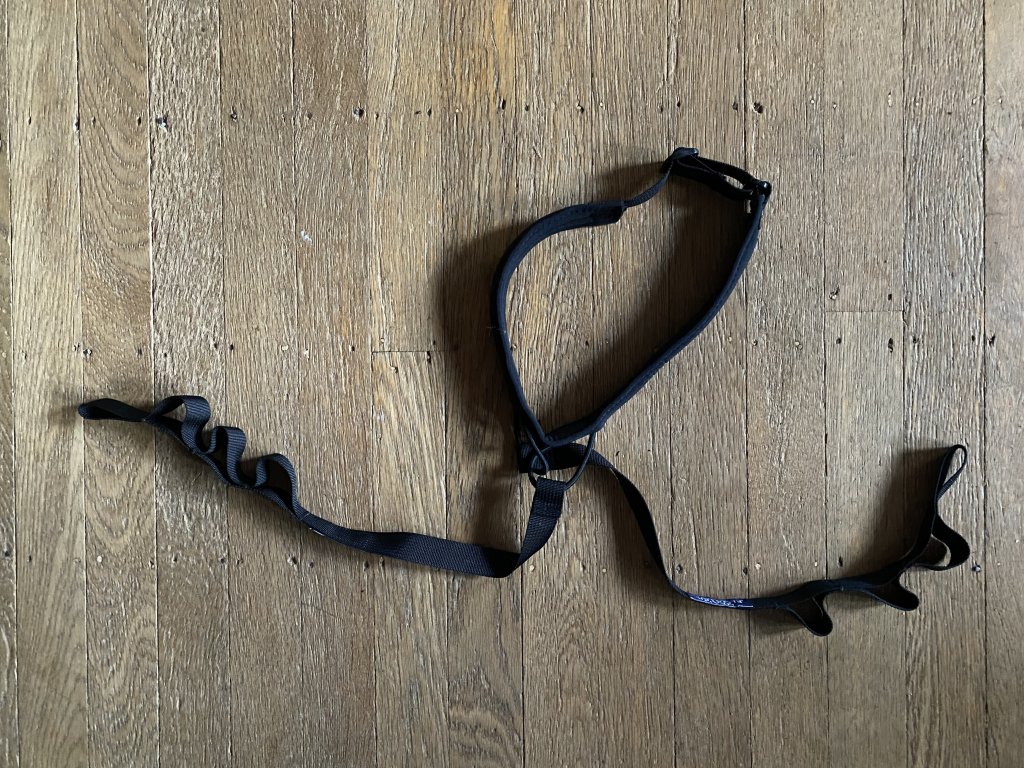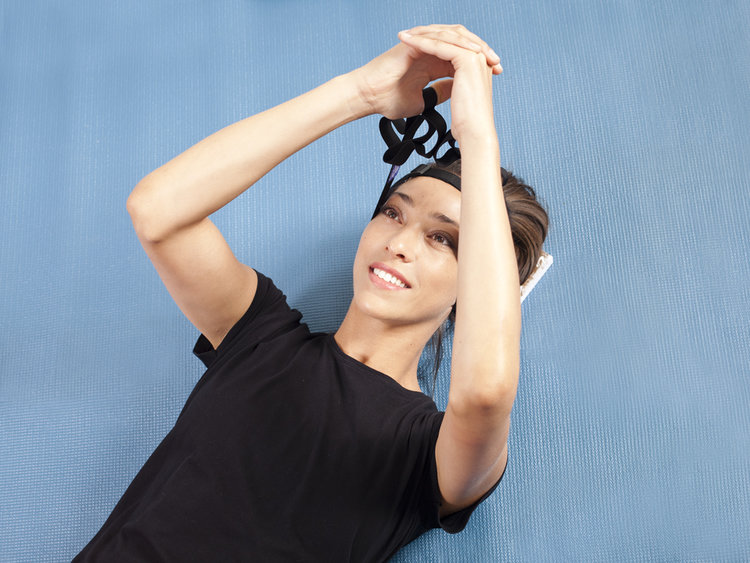When I pinched a nerve in my neck a few years ago, I had a $200 physical therapy appointment where they recommended I buy an $800 cervical traction machine, neither of which was covered by my insurance. I was able to borrow the machine, and it helped. But now there’s a $30 solution on the market, the HeadFloater.
What is the HeadFloater?
The HeadFloater is a neoprene band that circles and cradles the head. Inside, bungee cords connect in a figure eight design below the occipital ridge on the back of your head. Straps extend on either side. PhysicalMind Institute, makers of the device, say that cervical traction accomplishes four things: to relax and gradually stretch muscles along the spinal cord, plus ligaments around the spine; to expand the intervertebral space of the spine, bringing blood flow and circulation to release compression; to decrease pain and increase mobility by oxygenating muscles, nerves, ligaments and tendons; and to possibly release pinched nerves and release pressure on herniated and bulging discs.

PhysicalMind Institute sent me a sample HeadFloater to review for this site. When I first opened the package, I was underwhelmed. It looked like a jumble of little straps in a net bag. I took it out, wrapped it around my head and pulled on a strap. Nothing. I had no idea what I was doing. The PR person had directed me to videos on its use, but I was feeling obstinate and pressed for time and couldn’t muster the patience to watch what I imagined would be an insufferably long YouTube fest. Then I misplaced it for a while in my messy house.
Trying out the HeadFloater
Fast forward a couple of months. My conscience was bugging me because I’m a responsible adult who’d agreed to review a product. A quick search uncovered the HeadFloater. It turned out the video was only about two minutes long. Even I, who have no patience for long video instructions, could handle that.

The video instructed me to lie on the floor with a book or something of similar height under my head. First I tried the single side extension. You put the neoprene cradle around your head, then slowly turn your head one way, gently pulling on the opposite strap, before switching directions. Next, the head float, where you put the straps together overhead, gently pulling your head about an inch above the floor and letting it relax in the cradle.
“Watching these gentle, pleasurable motions, it may be hard to believe that they are so powerful,” the video said. “Yet everyone feels a lightness in just one session. With daily use, the benefits multiply.”
I didn’t feel too much going on as I did the exercises. But when I stood up, wait, what was this? A lightness?
Conclusion
I’m not convinced the HeadFloater is as effective as the $800 traction machine I used for that pinched nerve. But it’s a good place to start to work on tech neck or other problems. Or, better yet, as a daily preventative. I’m planning to add it to my brief morning stretches. It only takes a couple of minutes. And that pinched nerve was really dang painful. Prevention, please!



